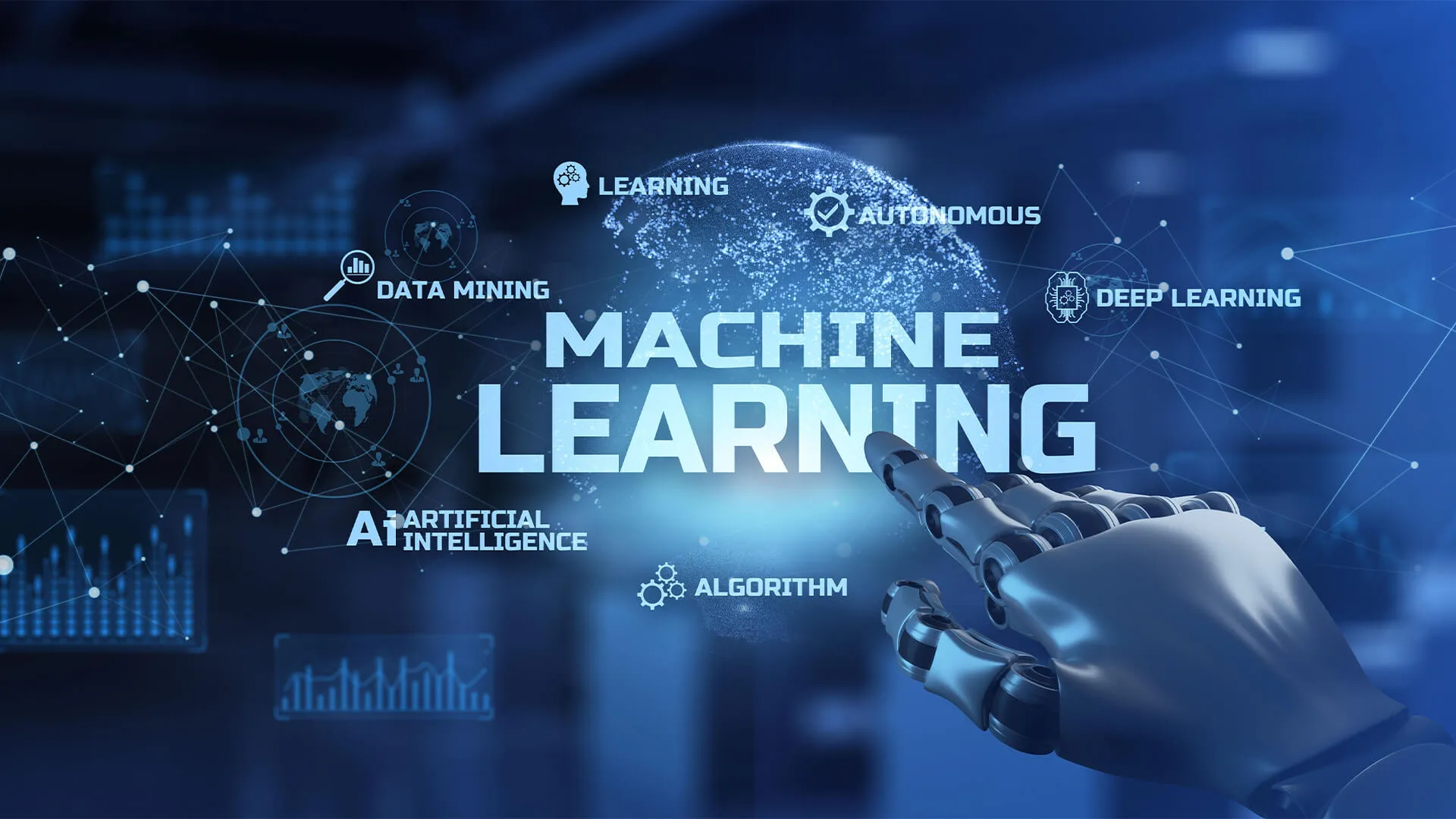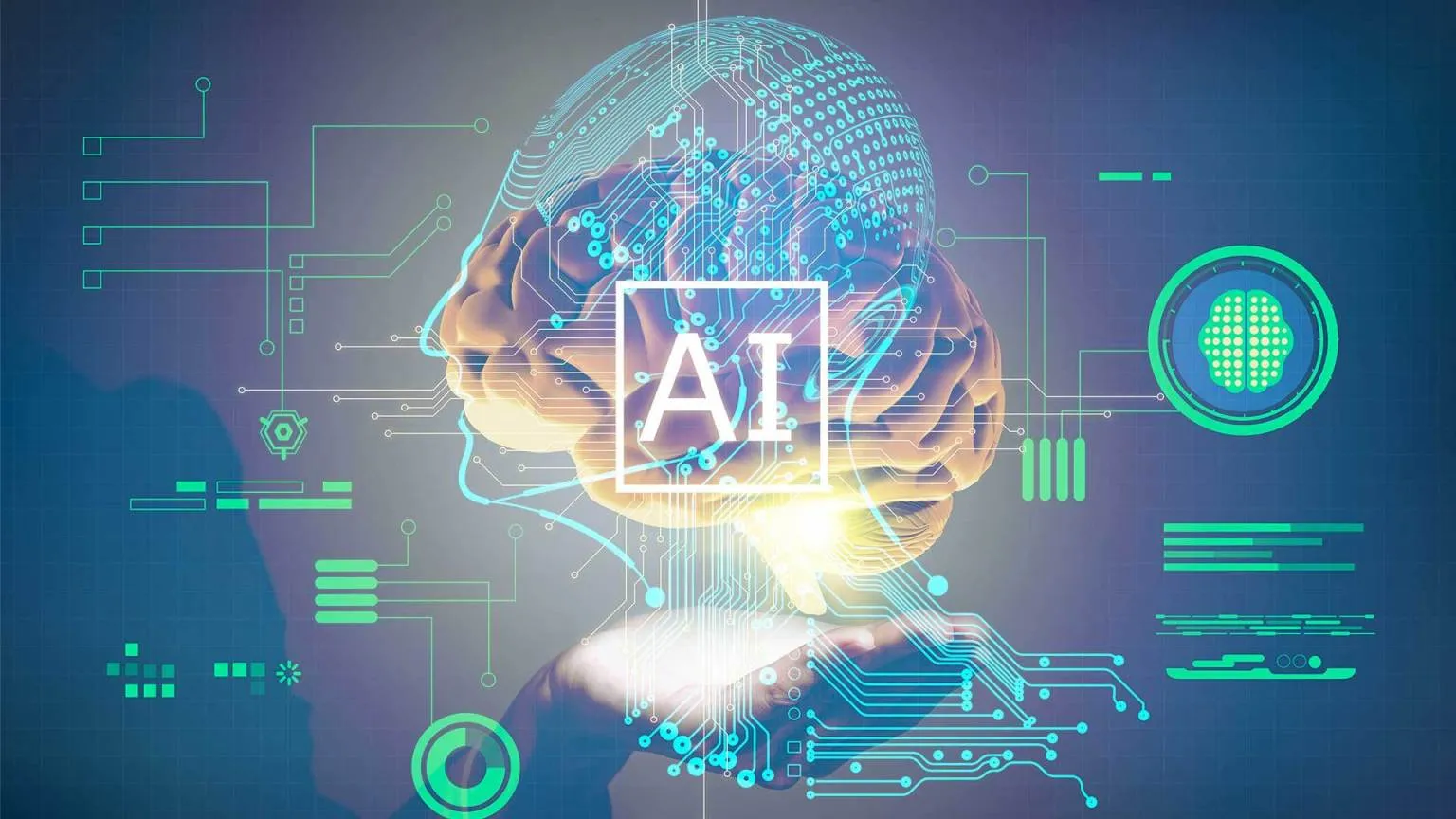Machine Learning Applications in Mechanical Data Analysis
Machine learning (ML) applications are transforming the field of mechanical data analysis by providing advanced techniques to extract insights, predict outcomes, and optimize processes. In the realm of predictive maintenance, ML algorithms can analyze historical mechanical data to identify patterns indicative of potential equipment failures. By leveraging these insights, maintenance schedules can be optimized, minimizing downtime and reducing overall operational costs. Additionally, ML models can adapt to changing conditions and improve their accuracy over time, enhancing the efficiency of mechanical systems.
In design optimization, machine learning can assist engineers in creating more efficient and robust mechanical components. By analyzing vast datasets related to materials, stress factors, and environmental conditions, ML algorithms can recommend design modifications that enhance performance and durability. This not only accelerates the product development cycle but also results in more reliable and cost-effective mechanical systems.
Furthermore, ML plays a crucial role in quality control by analyzing sensor data from manufacturing processes. By detecting anomalies or deviations from expected patterns, these algorithms can identify defects early in the production cycle, reducing waste and ensuring higher product quality. Overall, machine learning applications in mechanical data analysis empower industries to make data-driven decisions, improve efficiency, and innovate in the design and maintenance of mechanical systems.
Machine Learning Applications in Mechanical Data Analysis
Machine learning (ML) applications in mechanical data analysis are transforming the field of mechanical engineering, offering new perspectives on design, performance optimization, and predictive maintenance. Machine learning leverages algorithms and statistical models to enable systems to learn from data and make predictions or decisions without explicit programming. Here’s an exploration of the diverse applications of machine learning in the realm of mechanical data analysis:
- Fault Detection and Diagnostics: Machine learning algorithms can analyze historical data from mechanical systems to identify patterns indicative of faults or anomalies. By learning from past instances of failures or performance issues, ML models can detect early signs of problems, allowing for proactive maintenance and reducing downtime.
- Performance Optimization: ML applications contribute to the optimization of mechanical systems by analyzing vast datasets related to design parameters, operating conditions, and performance metrics. Algorithms can identify optimal configurations for improved efficiency, reduced energy consumption, or enhanced overall performance, leading to more sustainable and cost-effective solutions.
- Design Optimization: Machine learning assists in the design process by analyzing historical design data, simulation results, and performance feedback. Algorithms can recommend design modifications or improvements based on the identified relationships between different design parameters. This iterative approach accelerates the design cycle and helps engineers create more innovative and efficient products.
- Material Selection: ML models can analyze material properties, performance data, and historical usage information to guide engineers in selecting the most suitable materials for specific applications. This enhances the material selection process, taking into account factors such as strength, durability, and cost-effectiveness.
- Energy Consumption Forecasting: For mechanical systems with energy considerations, machine learning can predict future energy consumption based on historical usage patterns and external factors. This enables organizations to plan for energy-efficient operations, optimize resource allocation, and implement sustainable practices.
- Supply Chain Optimization: ML algorithms contribute to supply chain optimization in mechanical engineering by analyzing historical data related to suppliers, production schedules, and inventory levels. Predictive analytics can forecast demand, optimize inventory management, and enhance supply chain efficiency, minimizing delays and improving overall operational performance.
- Quality Control: Machine learning applications support quality control processes by analyzing data from manufacturing processes, inspections, and testing. Algorithms can identify patterns associated with defects or deviations from quality standards, enabling real-time quality control and reducing the likelihood of faulty products reaching the market.
- Lifecycle Predictions: ML models can predict the lifecycle of mechanical components by analyzing usage patterns, environmental conditions, and maintenance history. This enables organizations to plan for replacements or upgrades in a timely manner, avoiding unexpected failures and extending the overall lifespan of equipment.
- Simulation and Analysis Enhancement: Machine learning algorithms can enhance simulation and analysis processes by optimizing parameters and refining models based on iterative learning. This contributes to more accurate and efficient simulations, aiding engineers in understanding complex mechanical behaviors and making informed decisions.
- Customized User Interfaces: ML applications in mechanical data analysis can create customized user interfaces that adapt to user preferences and specific needs. This enhances the user experience by providing tailored insights, interactive visualizations, and personalized recommendations based on the analysis of individual or team-specific datasets.
In conclusion, machine learning applications in mechanical data analysis offer a range of benefits, from improving system performance and design optimization to predicting maintenance needs and enhancing overall efficiency. As the field continues to evolve, the integration of machine learning algorithms into mechanical engineering practices is becoming increasingly instrumental for innovation and competitiveness.
Predictive Maintenance Using Machine Learning in Databases
Predictive maintenance using machine learning in databases is revolutionizing the way mechanical systems are managed, offering a proactive approach to maintenance that minimizes downtime, reduces costs, and extends the lifespan of equipment. Traditional maintenance strategies, such as preventive or reactive maintenance, can be inefficient and costly. Predictive maintenance leverages machine learning algorithms to analyze historical data, sensor readings, and performance metrics to forecast potential failures and prescribe timely interventions. Here’s an exploration of the key aspects and benefits of predictive maintenance using machine learning in mechanical databases:
- Data Collection and Sensor Integration: Predictive maintenance relies on the continuous collection of data from various sensors embedded within mechanical systems. This data encompasses variables such as temperature, vibration, pressure, and other relevant parameters. Machine learning algorithms process and analyze this data to identify patterns indicative of potential issues.
- Feature Engineering and Data Preprocessing: Machine learning models for predictive maintenance often require careful feature engineering and preprocessing of data. Engineers must select relevant features, transform data into a suitable format, and address any missing or noisy data. This step is crucial for ensuring the accuracy and reliability of predictive models.
- Anomaly Detection: Machine learning algorithms excel at detecting anomalies or deviations from normal operating conditions. By training models on historical data, these algorithms can learn the typical behavior of mechanical systems. When real-time data deviates from these learned patterns, the algorithm can flag potential anomalies, indicating a need for closer inspection or maintenance.
- Failure Prediction: Predictive maintenance models use historical data to predict the likelihood of component failures within a defined time frame. These predictions are based on the identification of precursor patterns or indicators that precede specific failure modes. By forecasting potential issues, maintenance teams can plan interventions before critical failures occur.
- Condition Monitoring: Machine learning enables continuous condition monitoring of mechanical components. Algorithms can assess the health and performance of equipment in real time, providing insights into wear and tear, degradation, or abnormal behavior. This constant monitoring allows for timely maintenance actions, reducing the risk of unexpected breakdowns.
- Prescriptive Maintenance Actions: In addition to predicting failures, machine learning models can prescribe optimal maintenance actions. Based on historical data and the identified issues, these models can recommend specific interventions, such as part replacements, lubrication, or adjustments, to mitigate the risk of failures and optimize system performance.
- Cost Reduction: Predictive maintenance contributes to cost reduction by minimizing unplanned downtime and preventing catastrophic failures. It allows organizations to plan maintenance activities during scheduled downtimes, optimizing resource allocation and reducing the need for emergency repairs. This leads to significant savings in both direct repair costs and indirect losses associated with downtime.
- Extended Equipment Lifespan: Proactive maintenance based on machine learning insights contributes to the extended lifespan of mechanical equipment. By addressing issues before they escalate, organizations can maximize the useful life of assets, delay the need for replacements, and make more strategic investment decisions.
- Improved Resource Allocation: Predictive maintenance helps organizations allocate resources more effectively. By prioritizing maintenance activities based on criticality and predicted failure risks, teams can focus their efforts where they are needed most. This targeted approach improves the efficiency of maintenance teams and ensures that resources are deployed where they have the greatest impact.
- Integration with Asset Management Systems: Machine learning applications for predictive maintenance can integrate seamlessly with asset management systems and databases. This integration ensures that maintenance predictions, recommendations, and historical data are readily available to maintenance teams, facilitating streamlined decision-making and documentation.
In conclusion, predictive maintenance using machine learning in mechanical databases represents a paradigm shift in maintenance strategies. By harnessing the power of data and advanced analytics, organizations can move from reactive and preventive approaches to a more strategic and cost-effective predictive maintenance paradigm.
Machine Learning Algorithms for Mechanical Data
Machine learning algorithms play a pivotal role in extracting valuable insights from vast and complex datasets in the field of mechanical engineering. These algorithms, ranging from traditional statistical methods to advanced deep learning techniques, enable engineers to analyze, model, and make predictions based on mechanical data. Here’s an exploration of the machine learning algorithms commonly applied in the analysis of mechanical data:
- Linear Regression: Linear regression is a fundamental algorithm used for modeling the relationship between a dependent variable and one or more independent variables. In mechanical data analysis, linear regression can be applied to understand the linear correlation between variables, such as the relationship between temperature and mechanical stress.
- Decision Trees: Decision trees are versatile algorithms that can be used for classification and regression tasks. In mechanical data analysis, decision trees can help identify key factors influencing specific outcomes, such as the classification of components into different failure modes or the prediction of system performance based on various parameters.
- Random Forests: Random forests are an ensemble learning technique that combines multiple decision trees to improve predictive accuracy and robustness. In mechanical applications, random forests can be employed for tasks such as fault detection, where the collective decision of multiple trees enhances the overall reliability of the model.
- Support Vector Machines (SVM): SVM is a powerful algorithm used for classification and regression tasks. In mechanical data analysis, SVM can be applied to separate and classify different classes of components or predict performance metrics based on historical data. SVM is particularly effective in high-dimensional spaces.
- K-Nearest Neighbors (KNN): KNN is a simple and intuitive algorithm used for classification and regression. In mechanical engineering, KNN can be employed for tasks such as component classification based on similar historical behavior or predicting system responses by considering the behavior of neighboring data points.
- Principal Component Analysis (PCA): PCA is a dimensionality reduction technique that helps identify the most significant features in a dataset. In mechanical data analysis, PCA can be used to reduce the complexity of high-dimensional datasets, revealing the principal components that contribute most to system behavior or variability.
- Neural Networks: Neural networks, especially deep learning architectures, are increasingly utilized for complex tasks in mechanical data analysis. These algorithms can learn intricate patterns and relationships within large datasets, making them suitable for tasks such as image recognition in mechanical inspections or predicting system responses based on sensor readings.
- Long Short-Term Memory (LSTM): LSTM is a type of recurrent neural network (RNN) designed to capture long-term dependencies in sequential data. In mechanical applications, LSTM can be employed for time-series analysis, predicting future system behavior based on historical sensor readings or operational data.
- Gaussian Mixture Models (GMM): GMM is a probabilistic model that represents a mixture of multiple Gaussian distributions. In mechanical data analysis, GMM can be applied for clustering similar components or identifying patterns within datasets with complex structures.
- XGBoost: XGBoost is an efficient and scalable gradient boosting algorithm that excels in both classification and regression tasks. In mechanical data analysis, XGBoost can be employed for tasks such as predictive maintenance, where accurate predictions of failure probabilities are essential for timely interventions.
- Autoencoders: Autoencoders are a type of neural network architecture used for unsupervised learning and feature learning. In mechanical data analysis, autoencoders can be applied for dimensionality reduction, anomaly detection, or generating latent representations of complex datasets.
- Reinforcement Learning: Reinforcement learning is a paradigm where an agent learns to make decisions by interacting with an environment. In mechanical systems, reinforcement learning can be applied to optimize control strategies, automate maintenance decisions, or improve the efficiency of operational processes.
- K-Means Clustering: K-Means clustering is a popular unsupervised learning algorithm used for grouping similar data points. In mechanical engineering, K-Means clustering can be applied to classify components based on shared characteristics or group similar operational patterns within large datasets.
- Time Series Forecasting Models: Various time series forecasting models, such as ARIMA (AutoRegressive Integrated Moving Average) and SARIMA (Seasonal ARIMA), are employed in mechanical data analysis to predict future values based on historical time-series data. These models are particularly useful for forecasting equipment failures or performance degradation over time.
- Ensemble Learning: Ensemble learning methods, including bagging and boosting, combine multiple models to improve overall predictive performance. In mechanical data analysis, ensemble learning can be applied to enhance the robustness and generalization of models, especially in situations where the data is noisy or the relationships are complex.
In conclusion, the application of machine learning algorithms in mechanical data analysis offers a diverse toolkit for engineers to extract insights, make predictions, and optimize various aspects of mechanical systems. The choice of algorithm depends on the specific task, dataset characteristics, and the goals of the analysis, showcasing the versatility of machine learning in advancing the field of mechanical engineering.
Applications of ML in Fault Detection for Mechanical Systems
The applications of machine learning (ML) in fault detection for mechanical systems have significantly advanced the field of predictive maintenance and reliability engineering. ML algorithms can analyze large datasets, identify patterns, and predict potential faults or anomalies in mechanical systems. Here’s an exploration of the key applications and benefits of ML in fault detection for mechanical systems:
- Vibration Analysis: ML algorithms excel in analyzing vibration data from mechanical systems. By processing historical vibration patterns, these algorithms can learn to recognize deviations that may indicate faults such as misalignments, unbalanced components, or bearing defects. Early detection of these issues through ML allows for proactive maintenance before severe damage occurs.
- Acoustic Signature Analysis: ML is applied to analyze acoustic signals generated by mechanical systems. Unusual sounds or changes in acoustic patterns can be indicative of faults, wear, or abnormalities. ML models trained on acoustic data can detect these deviations and trigger alerts, enabling timely intervention to address potential issues.
- Temperature and Heat Analysis: ML algorithms can analyze temperature data to identify abnormal heat patterns in mechanical components. Overheating or sudden temperature spikes may indicate issues such as friction, lubrication problems, or electrical faults. ML-based fault detection enhances the monitoring of thermal conditions, preventing thermal-related failures.
- Oil and Fluid Analysis: In mechanical systems where lubrication is crucial, ML can analyze oil and fluid data to detect contamination, degradation, or changes in viscosity. Anomalies in fluid properties can be indicative of component wear, leaks, or improper lubrication, prompting preventive maintenance actions.
- Current and Power Consumption Monitoring: ML applications can monitor the electrical current and power consumption of mechanical equipment. Deviations in power signatures may point to issues such as motor faults, electrical imbalances, or impending failures. ML-based fault detection enhances the reliability of electrical components in mechanical systems.
- Sensor Fusion: ML leverages sensor fusion techniques to integrate information from multiple sensors simultaneously. Combining data from various sensors, such as accelerometers, temperature sensors, and pressure sensors, allows ML algorithms to provide a holistic view of mechanical system health. This comprehensive approach enhances fault detection accuracy.
- Machine Vision for Visual Inspection: Machine vision, a subset of ML, is used for visual inspection of mechanical components. Cameras capture images or videos of equipment, and ML algorithms analyze visual data to detect anomalies, defects, or wear patterns. This visual inspection aids in fault detection, especially in industries where visual cues are critical.
- Pattern Recognition in Time Series Data: ML excels in recognizing patterns within time series data collected from mechanical systems. By training on historical data, ML models can learn normal operating patterns and quickly identify deviations that may signal impending faults. This capability is particularly valuable for continuous monitoring of equipment.
- Failure Mode Identification: ML can assist in identifying specific failure modes within mechanical systems. By categorizing faults into distinct failure modes, ML models become adept at recognizing the unique signatures associated with each type of failure. This level of granularity enhances the precision of fault detection and facilitates targeted maintenance efforts.
- Condition-Based Maintenance Strategies: ML-driven fault detection enables the transition from traditional time-based maintenance to condition-based maintenance. By continuously monitoring the condition of mechanical components, ML algorithms can recommend maintenance actions precisely when they are needed, optimizing resource allocation and reducing downtime.
In conclusion, the applications of ML in fault detection for mechanical systems revolutionize maintenance practices by providing early and accurate insights into potential issues. This proactive approach minimizes downtime, extends equipment lifespan, and enhances overall system reliability in diverse industries such as manufacturing, transportation, and energy.
Automated Anomaly Detection in Mechanical Databases
Automated anomaly detection in mechanical databases, powered by machine learning (ML) algorithms, offers a transformative approach to monitoring and maintaining mechanical systems. Anomalies, deviations from normal patterns or behaviors, can indicate potential issues, faults, or irregularities within mechanical components. Leveraging ML for automated anomaly detection in mechanical databases provides several benefits:
- Continuous Monitoring: ML algorithms enable continuous monitoring of mechanical databases, analyzing real-time data streams for anomalies. This constant vigilance ensures that anomalies are detected promptly, allowing for immediate attention and intervention. Continuous monitoring is especially crucial in industries where unexpected failures can have significant consequences.
- Multivariate Analysis: Automated anomaly detection in mechanical databases using ML supports multivariate analysis. Instead of focusing on a single parameter, ML models consider multiple variables simultaneously, allowing for a more comprehensive understanding of system behavior. This multivariate approach enhances the accuracy of anomaly detection by capturing complex relationships within the data.
- Adaptability to Dynamic Systems: Mechanical systems often operate in dynamic environments where conditions change over time. ML algorithms are adaptable to such dynamic systems, adjusting their anomaly detection models based on evolving patterns. This adaptability ensures that the detection system remains effective even as the mechanical system undergoes changes or variations.
- Unsupervised Learning: Automated anomaly detection often employs unsupervised learning techniques, where the algorithm learns the normal behavior of the system without explicit labels for anomalies. This is advantageous because it can identify previously unknown anomalies or deviations that may not have been predefined. Unsupervised learning is particularly useful in scenarios with evolving or diverse datasets.
- Early Warning System: ML-driven anomaly detection serves as an early warning system, providing alerts or notifications as soon as abnormal patterns are detected. This early detection allows maintenance teams to proactively address potential issues before they escalate, minimizing downtime and preventing costly failures.
- Reduced False Positives: ML algorithms are designed to reduce false positives by learning the typical patterns of normal behavior within the mechanical system. This specificity ensures that alerts are triggered only when anomalies deviate significantly from established norms, reducing unnecessary alarms and streamlining the decision-making process for maintenance teams.
- Root Cause Analysis: When anomalies are detected, ML algorithms can assist in root cause analysis by examining contributing factors. By correlating anomalies with specific variables or conditions, engineers can gain insights into the underlying causes of deviations, facilitating targeted interventions and preventing recurring issues.
- Historical Trend Analysis: Automated anomaly detection incorporates historical trend analysis, allowing ML models to identify subtle deviations that may indicate gradual deterioration or changes in system behavior over time. This long-term perspective enhances the ability to detect anomalies that might be overlooked by traditional monitoring methods.
- Scalability: ML-driven anomaly detection is scalable to handle large and complex datasets commonly found in mechanical databases. As the volume of data increases, ML algorithms maintain their effectiveness, ensuring that anomaly detection remains robust even in environments with extensive data streams and interconnected systems.
- Integration with Maintenance Workflows: ML-powered anomaly detection seamlessly integrates with maintenance workflows. Automated alerts generated by the detection system can be directly incorporated into maintenance management systems, facilitating a streamlined and efficient response from maintenance teams. This integration enhances the overall reliability and responsiveness of maintenance processes.
In conclusion, automated anomaly detection in mechanical databases through ML represents a proactive and intelligent approach to system monitoring. By leveraging continuous, multivariate analysis and early warning capabilities, this methodology enhances the reliability, efficiency, and resilience of mechanical systems across various industries.
Machine Learning for Optimization in Mechanical Engineering
Machine learning (ML) applications for optimization in mechanical engineering have ushered in a new era of efficiency, performance enhancement, and resource utilization. By leveraging ML algorithms, engineers can optimize various aspects of mechanical systems, ranging from design processes to operational strategies. Here’s an exploration of the key applications and benefits of using machine learning for optimization in mechanical engineering:
- Design Optimization: ML algorithms can assist in optimizing mechanical designs by analyzing vast datasets related to material properties, geometries, and performance metrics. These algorithms can identify patterns and relationships within the data to recommend design modifications that enhance efficiency, reduce weight, or improve overall performance.
- Parametric Optimization: ML facilitates parametric optimization by exploring the influence of various design parameters on system performance. Algorithms can iteratively adjust parameters and assess their impact, allowing engineers to identify the optimal combination that meets specified criteria. This approach accelerates the design process and helps engineers make informed decisions.
- Topology Optimization: Topology optimization involves finding the most efficient distribution of material within a given design space. ML algorithms can analyze historical data on structural performance, loading conditions, and material properties to recommend optimized topologies. This approach contributes to lightweight designs with improved strength and structural integrity.
- Operational Optimization: ML applications optimize the operational parameters of mechanical systems. For example, algorithms can analyze real-time sensor data to adjust control parameters, ensuring that mechanical equipment operates within optimal ranges. Operational optimization enhances energy efficiency, reduces wear and tear, and extends the lifespan of components.
- Energy Consumption Reduction: ML-driven optimization strategies focus on reducing energy consumption in mechanical systems. By analyzing historical energy usage patterns and operational data, algorithms can identify opportunities for efficiency improvements. This approach is particularly valuable in industries where energy costs are significant, contributing to both economic and environmental sustainability.
- Supply Chain Optimization: ML algorithms contribute to supply chain optimization in mechanical engineering by analyzing data related to suppliers, production schedules, and inventory levels. Predictive analytics can forecast demand, optimize inventory management, and enhance supply chain efficiency. This optimization reduces lead times, minimizes stockouts, and streamlines the overall production process.
- Maintenance Planning and Scheduling: ML assists in optimizing maintenance planning and scheduling by analyzing historical maintenance data, equipment health metrics, and operational parameters. Algorithms can predict when maintenance activities are most likely to be needed, allowing for proactive planning and minimizing unplanned downtime. This predictive approach improves overall system reliability.
- Process Parameter Optimization: ML algorithms optimize process parameters in manufacturing and production processes. By analyzing data from sensors and control systems, algorithms can identify the ideal settings for machining, welding, or additive manufacturing processes. This optimization leads to improved product quality, reduced waste, and enhanced efficiency.
- Material Selection Optimization: ML applications aid in optimizing material selection by analyzing data on material properties, cost considerations, and performance requirements. Algorithms can recommend the most suitable materials for specific applications, considering factors such as strength, durability, and thermal conductivity. This optimization contributes to the overall performance of mechanical components.
- Lifecycle Cost Optimization: ML-driven optimization extends to considering the entire lifecycle cost of mechanical systems. By analyzing data related to initial costs, maintenance expenses, energy consumption, and expected lifespans, algorithms can recommend strategies that minimize overall costs while maintaining or improving performance.
- Automated Decision-making: ML enables automated decision-making in optimization processes. Algorithms can continuously assess data, adjust parameters, and implement optimization strategies in real time. This automation reduces the burden on human operators, accelerates decision-making, and ensures that systems operate at peak efficiency.
- Predictive Optimization: ML algorithms can predict future states of mechanical systems, allowing for anticipatory optimization. By learning from historical data and identifying trends, these algorithms can proactively adjust parameters to optimize performance before issues arise. Predictive optimization contributes to a more resilient and adaptive mechanical infrastructure.
- Simulation Model Calibration: ML aids in the calibration of simulation models used in mechanical engineering. Algorithms analyze real-world performance data to refine and calibrate simulation models, ensuring that simulations accurately reflect the behavior of physical systems. This calibration enhances the reliability of predictive models used in optimization processes.
- Failure Mode Mitigation: ML applications optimize mechanical systems by identifying potential failure modes and recommending strategies to mitigate risks. By analyzing historical failure data and operational conditions, algorithms can provide insights into critical failure modes, allowing engineers to implement preventive measures and optimize system reliability.
- Multi-Objective Optimization: ML algorithms can handle multi-objective optimization, where conflicting goals must be considered simultaneously. This capability is valuable in scenarios where engineers need to balance competing objectives, such as cost minimization, energy efficiency, and performance maximization.
In conclusion, machine learning for optimization in mechanical engineering empowers engineers to make data-driven decisions, enhance performance, and achieve efficiency gains across various aspects of design, operation, and maintenance. The integration of ML algorithms into optimization processes represents a transformative approach to addressing the complex challenges faced by modern mechanical systems.










